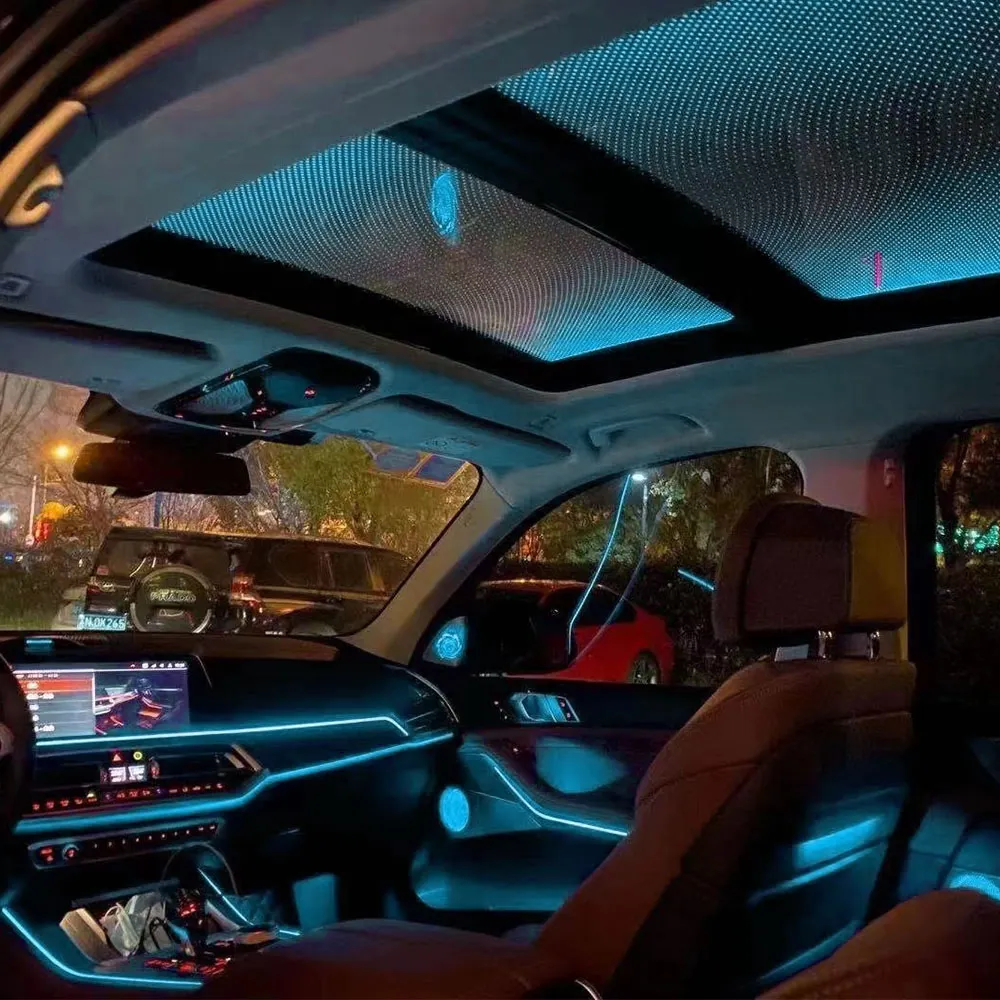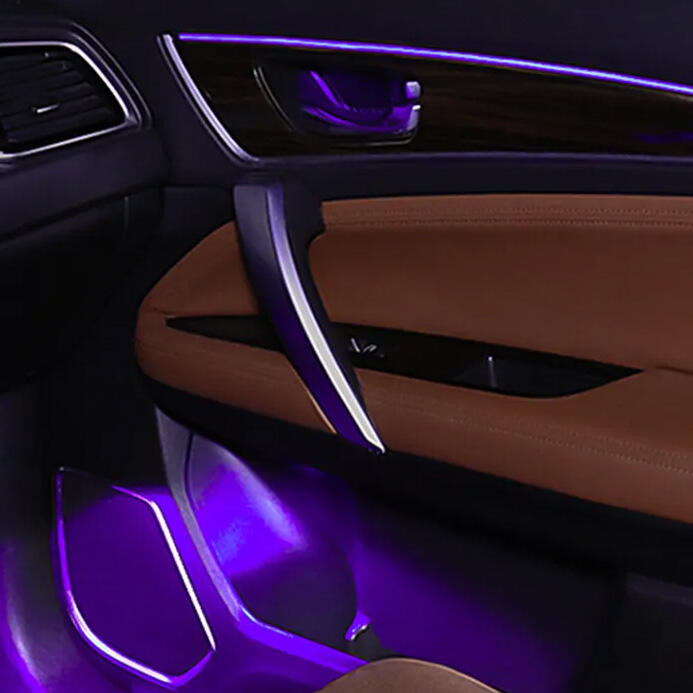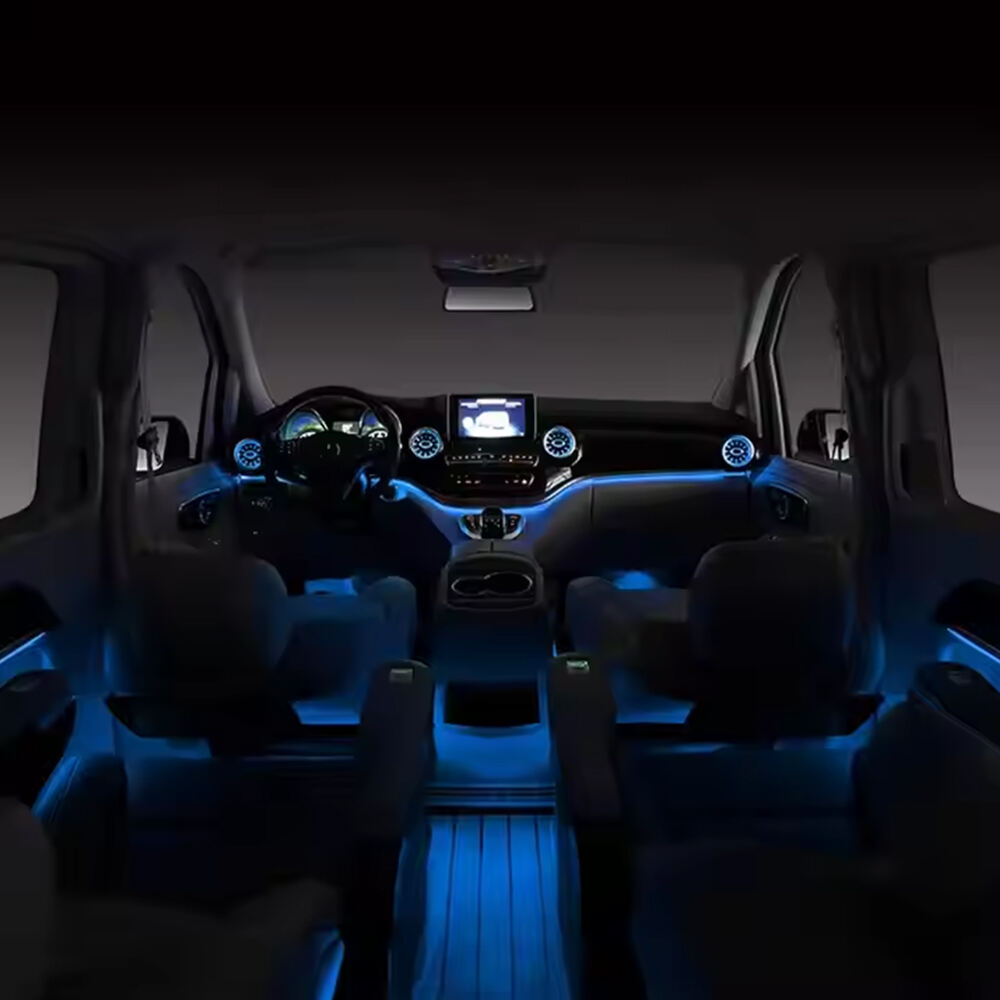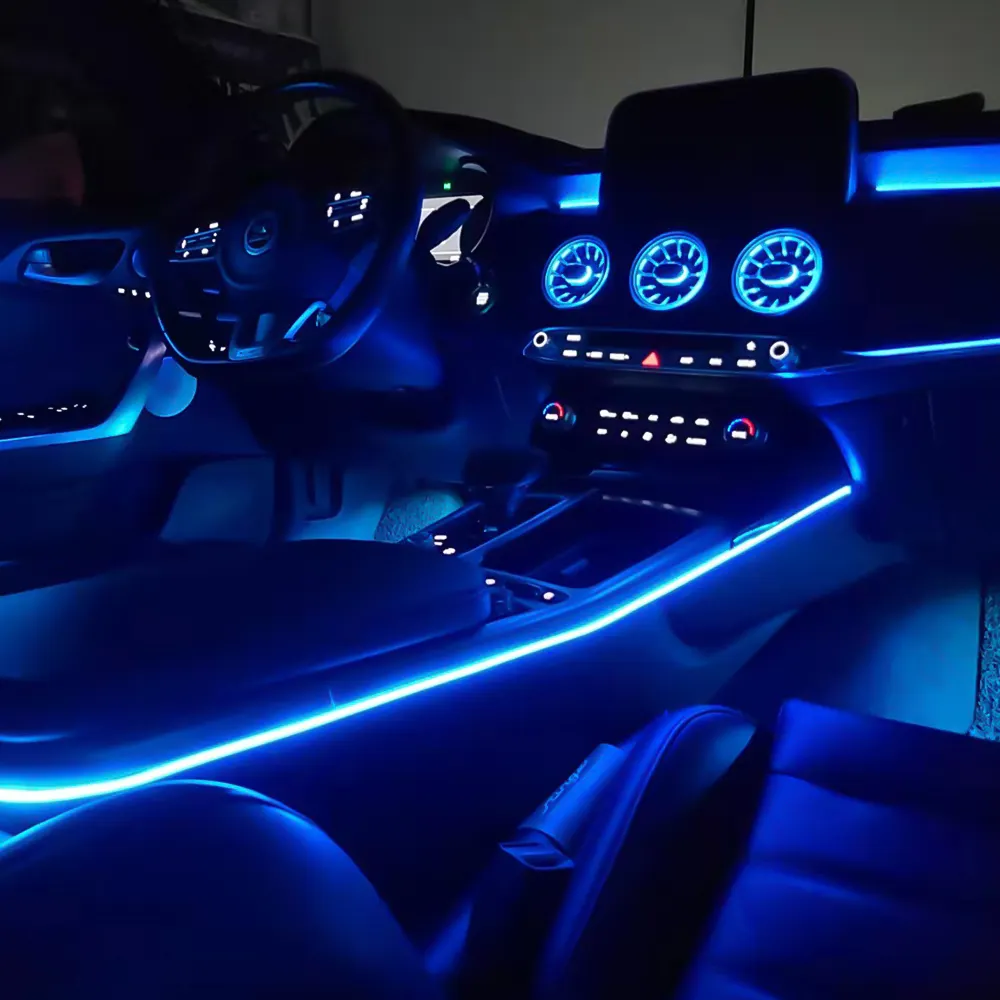The Science of Light and Emotion: How Mercedes Ambient Light Influences Mood
Color Psychology in Car Ambient Lighting and Emotional Impact
The ambient lighting in Mercedes cars isn't just for show - it actually draws from years of studies on how colors affect our minds and emotions. Different colors do different things to us physiologically. Red and orange lights tend to keep drivers awake and focused because they cut down on melatonin production. On the flip side, blues and greens help people relax since they boost serotonin levels according to some recent research published back in 2023. What makes Mercedes' system special though is that it doesn't stay fixed at one setting. The LEDs change constantly based on what's happening around the car and inside too. So if traffic gets heavy or night falls, the lighting shifts accordingly to match whatever state the driver might be in during their journey.
Warm Colors (Red, Orange, Yellow) and Their Impact on Alertness and Energy
Studies indicate that warm lighting, especially in amber and red tones, actually helps boost concentration and alertness levels. The reason? These colors work similarly to how sunlight behaves at dawn, which cuts down on melatonin in our bodies by around 34%, according to research from Chronobiology International back in 2022. What does this mean for real world situations? Well, experiments have found that people behind the wheel tend to stay focused about 22 percent longer when their car interiors are lit with warm tones rather than standard white lighting. That's why many folks prefer setting their dash lights to warmer settings during those late night drives or cross country trips where staying awake matters most.
Cool Colors (Blue, Green, Purple) and Their Calming, Relaxing Effects
Ambient lighting with cool tones actually works wonders at cutting down stress during tough driving situations. Take blue light for instance research published in Transportation Research Journal back in 2023 found it can slow heart rates by around 11 beats per minute when stuck in dense city traffic. Mercedes has this special turquoise setting they offer that mixes cyan with green colors inspired by elements found in nature. Drivers who tested this setup reported feeling calmer, with anxiety levels dropping nearly 30% during simulated downtown drives according to the same study. The soothing properties of these cooler colors are especially helpful on those frustrating stop-and-go commutes where driver exhaustion builds up fast over time.
Daytime vs Nighttime Lighting Preferences for Driving Safety and Comfort
People tend to want different lighting when they drive depending on whether it's day or night time. A recent survey by NHTSA in 2024 found that around 8 out of 10 drivers like cooler light colors around 4500K during the daytime because these shades work well with sunlight and cut down on glare from dashboards. When darkness falls, most folks change their preference again, with about two thirds opting for warmer lights below 2600K. These warmer tones help maintain better night vision and actually reduce eye strain by roughly 40 percent compared to those bright blue LED lights many cars have nowadays. Making this kind of adjustment between day and night isn't just about comfort either it makes roads safer too for everyone involved.
This science-backed strategy transforms vehicle interiors into responsive wellness spaces, demonstrating that ambient light is not merely decorative—it's a functional element of automotive design.
Customization and Control: Personalizing Mercedes Ambient Light via MBUX
Personalization and Mood Based Customization of Interior Lighting
The ambient lighting in Mercedes cars isn't just about looking good it actually helps set moods through their MBUX system. According to recent data from the Automotive UX Report 2024, around 8 out of 10 luxury car buyers consider adjustable lighting a must have feature these days. The MBUX system lets drivers choose from different settings such as Focus mode which uses cool blue tones to help stay focused, or Energize mode featuring warm red hues that keep alertness levels high. What makes this interesting is how these color choices are based on real psychological research about how colors affect our minds. For instance, during late night drives when tiredness kicks in, certain colors can make all the difference. And stuck in traffic? Some gentle lighting can really ease stress levels while waiting for that next green light.
Color Changing Options and Seamless Integration with MBUX Interface
The MBUX system can be controlled through either a 12.8 inch OLED touchscreen or by using voice commands. It gives drivers access to no fewer than 64 different colors plus some pretty cool dynamic gradients that actually change based on what kind of music is playing, how fast the car is going, or even which driving mode has been selected. Take purple lighting for example when someone plays classical music in the background creates this really calming atmosphere inside the cabin. On the flip side, if there's upbeat music coming from the speakers then the orange lights start pulsing along with the beat making everything feel much more engaging. Research published in the Human-Machine Interaction Journal back in 2023 found that systems responding quickly like MBUX does at under 25 milliseconds actually cuts down on driver distractions by about 19 percent compared to those laggy older interfaces. So people don't get distracted as easily while still being able to interact smoothly with their vehicles.
Popular Colour Options for Car Ambient Lighting and User Trends
| Color Group | Usage Scenario | Preference Rate |
|---|---|---|
| Cool Blues | Highway Cruising | 42% |
| Warm Ambers | Urban Night Drives | 34% |
| Dual-Tones | Music Synchronization | 24% |
Neutral whites (4500K) remain popular in minimalist designs, while teal-green combinations balance elegance with functional benefits like improved night vision. A growing trend shows a 28% year-over-year increase in location-based automation, such as soft yellow lighting activating automatically during sunset commutes, enhancing both convenience and circadian alignment.
Smart and Adaptive Lighting: The Future of Mercedes Ambient Light Technology
Adaptive Ambient Lighting Based on Driving Conditions and Environment
The ambient lighting system in modern Mercedes cars actually adjusts based on several factors at once including what's happening outside - think weather conditions, how curvy the road gets, even what time it is. When there's fog around, these systems typically boost brightness somewhere between 15 to 20 percent according to some research from the Automotive Psychology Journal back in 2023. This helps keep things clear for drivers without making them squint or get blinded. Out on the highway, those cool steel blue lights tend to reduce fatigue during longer drives. But when someone takes a twisty country route instead, the system switches to warmer colors that seem to make people more alert and ready to react quickly to whatever comes next.
Integration With Biometrics and Driver State Detection for Real Time Mood Adaptation
Newer vehicle systems now come equipped with all sorts of biometric sensors including infrared cameras and monitors built into steering wheels that can spot when drivers are stressed out, sleepy, or just plain tired. The moment these sensors pick up on things like increased heart rates or tense faces showing stress, the car interior starts changing colors slowly towards soothing greens and lavenders similar to what doctors have found actually lowers cortisol levels around 12% during tests. And when those same sensors notice someone's eyes starting to droop too much, they switch things up with bright amber lights throughout the cabin instead. This whole setup combines physical body signals with some pretty smart emotional awareness tech to keep drivers alert and focused while behind the wheel.
Future Projections: Predictive Ambient Lighting Responding to Traffic and Weather
According to the MobilityTech Forecast from 2024, around 82 percent of luxury cars will link their interior lights to navigation systems and real time weather data by 2026. Picture this scenario: the dashboard glows cobalt blue as soon as rain shows up about three miles away, giving drivers a heads up without being too obvious. Or think about red warning lights flashing when traffic sensors spot upcoming brake zones. The whole idea behind these smart features is to help drivers stay better informed about what's coming next on the road. These kinds of visual signals can actually cut down accidents because they prepare people mentally before situations arise, matching our brain's reaction time with what's happening outside the car window.
FAQ
Q: How does Mercedes ambient lighting impact driver alertness?
A: Warm colors like red and orange reduce melatonin levels, improving alertness and focus. This makes them ideal for driving conditions where staying awake is crucial.
Q: What effect do cool colors have on drivers?
A: Cool colors such as blue and green have calming effects that can reduce stress and anxiety, especially during heavy traffic or long commutes.
Q: Can the ambient lighting in Mercedes vehicles be customized?
A: Yes, through Mercedes' MBUX system, drivers can choose from different colors and modes, tailoring the lighting based on mood or driving needs.
Q: How does ambient lighting adapt to driving conditions?
A: Modern Mercedes systems adjust lighting based on driving conditions, such as weather and road types, to maximize safety and comfort.






